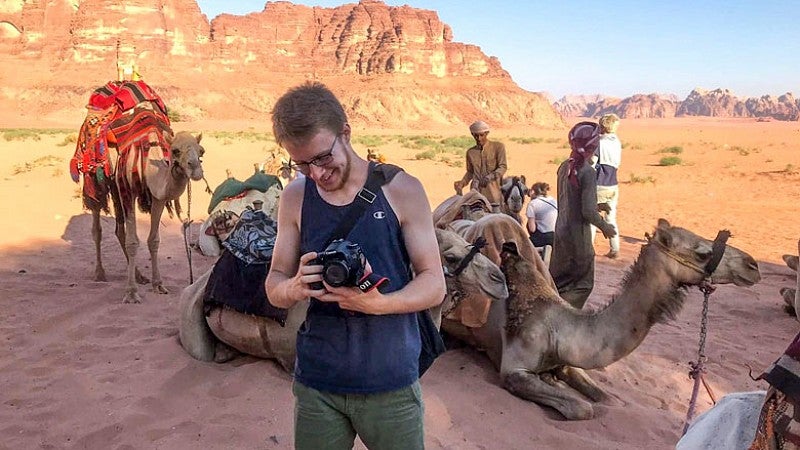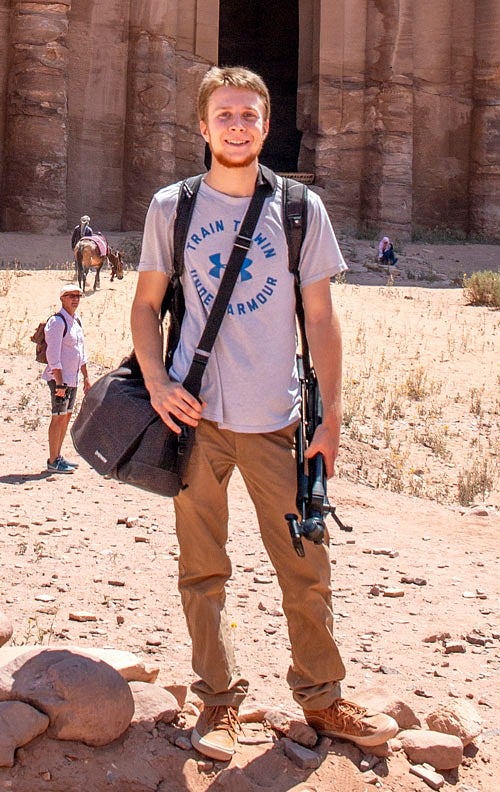
Throughout fall and winter term of the 2018-19 academic year, I had the pleasure of co-writing an extensive report, “State of Social Media Middle East: 2018,” with the UO School of Journalism and Communication’s (SOJC) Carolyn Chambers Professor of Journalism Damian Radcliffe. Since my goal is to work in the Middle East as a journalist, I was more than happy to delve into the world of Middle East and North Africa (MENA) social media.
Beyond satisfying my own curiosity, writing the report taught me three important lessons about data and storytelling:

While researching social media statistics, I realized how media audiences can vary greatly from region to region. For example, Facebook use in the United States has plummeted since 2017, but in the Middle East, it has seen consistent annual growth and remained a dominant force. More than 265 million people now use Facebook in the MENA region, and, in Egypt, around 24 million people use the platform every day.
Another interesting stat I found was that CNN was considered one of the most trusted news sources by Arab youth in 2018. This surprise demonstrates how audiences in one part of the world can be vastly different from another. In the United States, polls by Statista showed that only 33% of respondents thought CNN to be trustworthy.
2. Understanding culture
As in many other parts of the world, social media and culture in the Middle East go hand in hand. Expressive Arabic Bitmoji stickers were finally released, to the delight of the millions of MENA Snapchat users out there. But I learned that the two worlds of MENA media and culture can also clash at times.
BBC News reported that Iranian citizen Maedeh Hojabri was arrested after she posted videos of herself on Instagram dancing to Iranian and Western pop music. In the article, BBC notes, “The Iranian government has strict rules governing women’s clothing and dancing with members of the opposite sex in public is banned, except in front of immediate family members.”
3. Linking history and data
To fully understand the significance of social media in the Middle East, it’s important to understand how history has shaped media in the region into what it is today. Social media was pivotal to sparking the widespread revolution that occurred during the Arab Spring, and knowing this helped me understand the crackdown on media that is happening now in some Arab countries.
In 2018, Egypt passed legislation that placed social media accounts with more than 5,000 followers under government watch and required newly created websites to receive a government license. In Syria, government authority proposed a ban on WhatsApp calls despite the high number of Syrians who depend on the app. But, considering the role social media had in the Arab Spring, I was not surprised to learn of the government’s fear of the app’s reach.
Co-writing “State of Social Media Middle East: 2018” was both enjoyable and a learning experience. I walked away with a better understanding of how data can identify a region’s audience, how to highlight cultural complexities, and how to tell a story about the connection between history and current issues. I hope readers will find the report as useful as I have.
Post by Payton Bruni
Payton Bruni is a senior pursuing a major in journalism and a minor in Arabic studies at the UO School of Journalism and Communication. He works as a freelance journalist and content developer for Gather, an online resource for engaged journalists hosted by the SOJC’s Agora Journalism Center. He is a member of the UNESCO Crossings Institute for Conflict-Sensitive Reporting and Intercultural Dialogue and recently completed an intensive language program based in Amman, Jordan, as a step toward his goal of working as a journalist in the Middle East. He also works as a photojournalist for Ethos Magazine and has published with journalism.co.uk, KEZI News, KVAL News and the Newberry Eagle newspaper based out of La Pine, Oregon. Follow him on Twitter @payton_bruni and see more of his work at paytonbruni.com.
